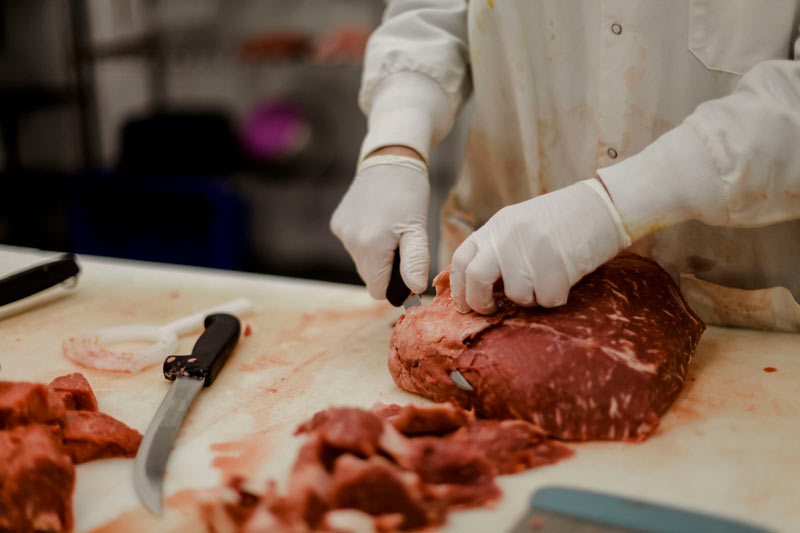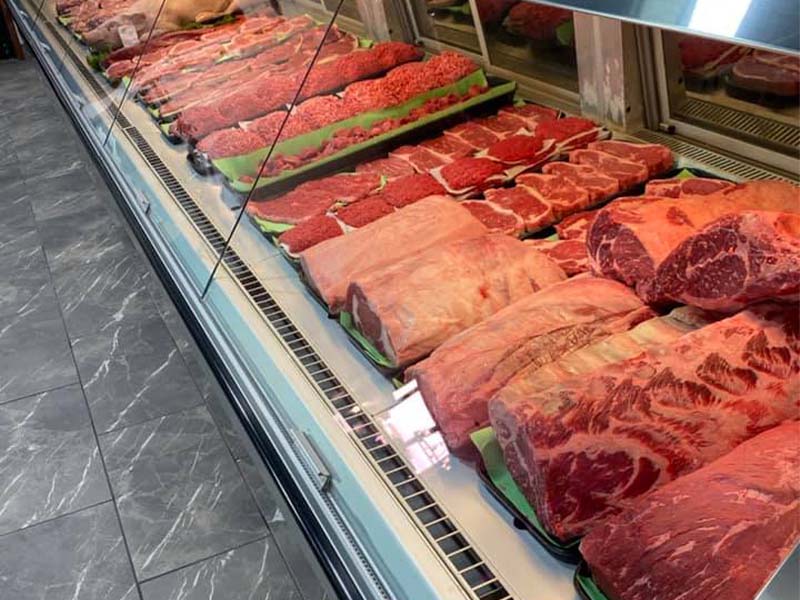What Makes Bagley Farms Meat Market Edwardsville IL Stick Out for Meat Lovers
What Makes Bagley Farms Meat Market Edwardsville IL Stick Out for Meat Lovers
Blog Article
Reveal the Art of the Butcher's Cut in a Modern Meat Market
In the ever-evolving landscape of modern-day meat markets, the butcher's cut has actually transcended its standard roots, merging old-time craftsmanship with contemporary practices. What really establishes the contemporary butcher apart is their capability to build a much deeper link in between customers and the beginnings of their meat.
Evolution of Butchery Techniques
The advancement of butchery methods shows a rich tapestry of development and adaptation driven by innovations in modern technology, adjustments in consumer demand, and a much deeper understanding of meat science. Historically, butchery was a craft passed down via generations, with techniques honed over centuries to take full advantage of return and taste. The industrial transformation ushered in mechanization, changing typical methods and making it possible for large-scale processing.
The mid-20th century saw butchery strategies even more improved by scientific understandings right into muscle biology and meat aging, enhancing both tenderness and preference. Advancements like vacuum cleaner packaging and refrigeration expanded item shelf-life, allowing butchers to expand offerings and improve quality assurance. This duration also marked the surge of specific equipment, such as band saws and meat slicers, which boosted accuracy and effectiveness in meat processing.

The 21st century has actually introduced digital innovation into the butchery world. Digital systems currently assist in monitoring pet provenance and optimizing cuts to fulfill specific customer choices. Additionally, a renewal in artisanal butchery has arised, mixing typical abilities with modern expertise to provide to customers seeking ethical and sustainable meat choices. This advancement emphasizes a dynamic interaction between practice and development, meeting modern needs while preserving the craft's heritage.
Recognizing Meat Cuts
Recognizing the complexities of meat cuts is vital for both butchers and customers seeking high quality and value. Each cut comes from a various part of the pet, presenting special tastes, appearances, and food preparation approaches - bagley farms meat market edwardsville il. Mastery of these distinctions not only improves cooking experiences yet additionally makes best use of the utility of each carcass. For butchers, accurate cuts reflect skill and regard for the craft, guaranteeing minimal waste and ideal return.

Comprehending muscular tissue composition is important; muscle mass used extra frequently by the animal have a tendency to be harder and are best fit for slow-moving cooking techniques, while less-used muscles, like those found in the loin, are extra tender and perfect for grilling or roasting. Experience with these differences equips consumers to make enlightened choices, improving their culinary endeavors.
Selecting High Quality Meat
Selecting the best meat involves greater than simply picking a visually attractive item from the display screen. bagley farms meat market edwardsville il. The art of picking quality meat requires a critical eye and expertise of details features that signify freshness and excellence. To start with, focus on the color; beef must have a bright, cherry-red hue, while lamb ought to show a soft pink tone, and pork a pale pink. This suggests the meat is fresh and hasn't been exposed to oxygen for as well lengthy.
Second of all, think about the marbling, which describes the white flecks site of fat within the muscle mass. Appropriate marbling is an essential indicator of inflammation and taste, as it melts during food preparation, enhancing the meat's juiciness. Keep in mind, greater marbling typically associates with superior quality cuts, such as USDA Prime.
Appearance is an additional critical factor; meat needs to feel solid to the touch, not slimed or overly soft. In addition, be conscious of the aroma. Fresh meat ought to have a clean, neutral odor, without any type of sour or repulsive odors.
Pairing Cuts With Food Preparation Methods

Alternatively, harder cuts like brisket and chuck roast are abundant in collagen, which damages down into jelly when cooked gradually. These cuts are ideal for braising or sluggish roasting, enabling the meat to soften with time and create deep, site intricate flavors. Similarly, cuts such as short ribs and pork shoulder prosper with slow-cooking methods, where extended cooking times transform their durable textures right into succulent recipes.
Lamb shanks and oxtail, which require long term cooking to soften, are best candidates for cooking or slow simmering. These approaches coax out rich, hearty tastes while preserving dampness. By understanding the special attributes of each cut, cooks and home chefs alike can boost their culinary developments, guaranteeing each dish is both satisfying and remarkable.
The Butcher's Role Today
Browsing the progressing landscape of the modern meat market, the butcher's role today extends beyond plain prep work of cuts. Contemporary butchers are cooking artisans, teachers, and advocates for sustainable methods. They bridge the void in between the farm and the fork by guaranteeing ethical sourcing, comprehending animal husbandry, and prioritizing transparency in the supply chain. This shift reflects the growing customer demand for high quality over quantity, where provenance and pet welfare are extremely important.
In addition to crafting exact cuts, butchers now engage directly with consumers, using cooking suggestions and tailoring choices to suit private demands and preferences. Their proficiency in meat aging, marbling, and taste accounts empowers consumers to make enlightened decisions, improving their cooking experiences. This customized solution exhibits the butcher's evolving duty as a trusted consultant in the cooking area.
Furthermore, butchers here are the findings are essential in decreasing waste, utilizing whole pets to develop varied items such as sausages and supplies. This comprehensive technique not just values the animal but likewise lines up with modern sustainability objectives. By doing this, the modern butcher embodies both tradition and advancement, adjusting to an ever-changing market while maintaining the virtuosity and integrity of their craft.
Conclusion
The contemporary butcher's craft elaborately weaves traditional techniques with contemporary advancements, highlighting lasting methods and honest sourcing. Proficiency in recognizing varied meat cuts and top quality indicators equips butchers to offer educated suggestions, lining up particular cuts with ideal cooking methods. This competence not only elevates culinary experiences but additionally reinforces the link in between consumers and the origins of their food. By honoring historic methods while welcoming modern needs, the butcher's function remains vital in today's innovative meat market (bagley farms meat market edwardsville il).
Report this page